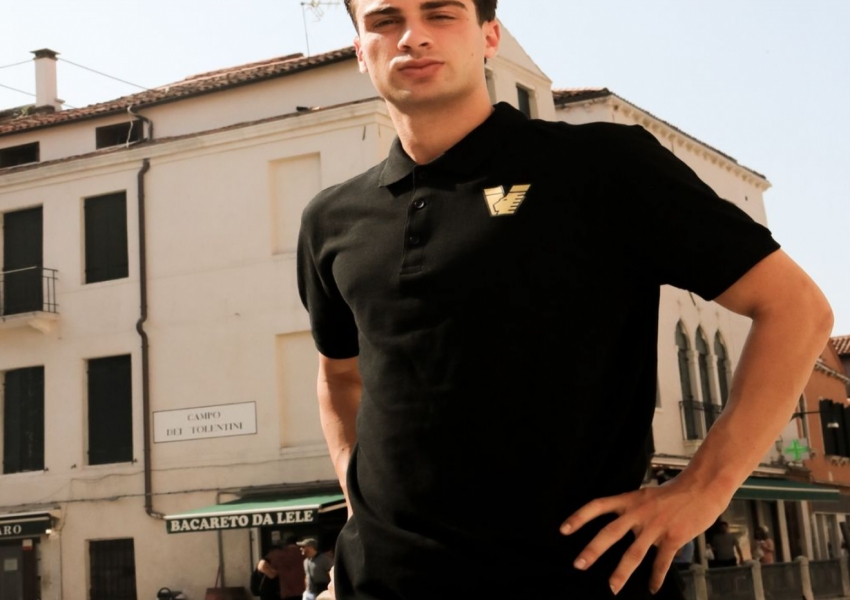Juventus' €90 Million Market Revenue Proves Investment Return, Atalanta Also Points the Way for Inter
Italian media highlight the significant revenue generation of Juventus, Atalanta, and Inter Milan in the current transfer market, emphasizing that Serie A has entered an era where selling young players is crucial for financial stability. This summer, Juventus has emerged as the highest-earning club in Serie A through player sales.

Juventus' Successful Sales Strategy
With the nearly finalized deal of Matías Soulé moving to Roma for €30 million (including add-ons), Juventus' earnings from selling players produced by their "Juventus Next Gen" program will exceed €90 million this summer. The confirmed sales include:

- Koni De Winter to Genoa for €10 million
- Samuel Iling-Junior and Nicolò Barella to Aston Villa for €28 million
- Kaio Jorge to Cruzeiro for €7.2 million
Two more deals are near completion:

- Dean Huijsen to Bournemouth for €18 million plus 20% of future transfer fees
- Matías Soulé to Roma for €30 million (including add-ons)
These transactions demonstrate the lucrative return on investment from Juventus' Next Gen program. Currently, Juventus has reinvested heavily in new players, including Douglas Luiz, Marcus Thuram, Arthur Cabral, and Gregorio, with a total expenditure of €89.4 million. However, thanks to their successful sales, Juventus faces minimal financial pressure and retains the capability to continue their transfer activities.
The Long-Term Vision Paying Off
Back in 2018, when Beppe Marotta championed the investment of several million euros to establish a second team for Juventus, many fans doubted its potential impact. Six years later, this decision has proven immensely profitable. The second team has not only provided first-team players like Fabio Miretti and Nicolo Fagioli but has also become a "money-printing machine" in the transfer market.
Reflecting on a report after the 2024 European Championship, it becomes clear why Italy has struggled while Spain has seen a resurgence with young talents like Lamine Yamal. Some Italians argue that the country's football foundation has weakened and lacks a sufficient "football population." However, the reality is that Italy's football base remains solid, comparable to Spain's.
Talent Production vs. Utilization
The issue lies in producing plenty of talent but not utilizing it effectively. According to a report, Italy, with a population of 60 million, has 1.4 million registered players, more than Spain's 1.249 million. However, only 5.5% of these players make it to their Serie A teams, compared to 19.6% in La Liga. In other words, Italy doesn’t lack football talent; the "old culture" of relying on veterans needs to change. Whoever can address this issue will reap the rewards of the modern football era.
Inter Milan's Struggles and Future Prospects
As last season’s Serie A champions, Inter Milan adopted a "sell before buy" transfer strategy. However, their efforts to generate revenue have been disappointing, with only €7.3 million earned from player sales so far. This includes:
- €4 million from the sale of Franco Carboni
- €2.5 million from the sale of Samuele Mulattieri
- €0.8 million from minor deals
If the deal of Valentin Carboni to Marseille (which could fetch up to €40 million) is finalized, Inter's financial situation will improve. All these revenues rely heavily on young talents, proving the critics wrong who dismiss the value of developing youth players.
Over the years, some of Inter’s top performers—like Marcelo Brozovic and Lautaro Martinez—have not generated as much transfer market interest as expected. Experts believe that if these players were 2-3 years younger, their market value would be significantly higher. In today's football world, young talents dominate the transfer market.
Market Trends in Europe
Across Europe, the emphasis on young talent is evident. In Spain, Real Madrid was displeased when Manchester United secured Arda Güler for €62 million, demonstrating their commitment to acquiring young players. In England, Aston Villa spent over €100 million to sign several players in their early twenties. In Germany, Bayern Munich fans considered the €53 million spent on 22-year-old Arijon Ibrahimovic justified, while viewing the €51 million on 29-year-old João Palhinha as excessive. These trends highlight that young talent is highly valued in the transfer market.
Atalanta and AC Milan Leading by Example
Even in Serie A, where the old culture is more prevalent, changes are apparent. Atalanta and AC Milan are among the top five revenue-generating clubs this summer, primarily by selling U23 players. Atalanta has sold players like Caleb Okoli and Sam Lammers, generating €41.25 million. AC Milan, despite the unsuccessful De Ketelaere acquisition, managed to recover some funds by selling him for €22 million.
In response to these market trends, Atalanta established a second team in 2023, followed by AC Milan in 2024. They recognized the need to adapt to avoid future financial struggles. Inter Milan has been striving to create a second team for years. However, financial constraints during Steven Zhang’s era delayed these plans. With Oak Tree Capital now easing Inter's cash flow pressures, it's an ideal time to implement the second team project.
Calls for Action from Inter Fans
On social media platforms, a growing number of Inter Milan supporters are calling for the club to establish a second team, even if it requires significant investment. Observing the successful youth development and financial strategies of Juventus, Atalanta, and other clubs, fans believe this move is crucial for the club’s future.
Inter Milan's management must heed these calls and take decisive action. Establishing a second team will not only provide a pathway for young talents to progress but also create a sustainable revenue stream from player sales. This approach aligns with the modern football era, where nurturing and utilizing young talents is key to success both on and off the pitch.
Juventus’ impressive €90 million revenue from player sales this summer underscores the long-term benefits of investing in youth development. Atalanta’s strategic moves and AC Milan’s adaptation to market trends further highlight the importance of prioritizing young talents. For Inter Milan, embracing this model and establishing a second team could unlock new financial and competitive advantages, ensuring the club remains at the forefront of Italian and European football.
Copyright Statement:
Author: mrfootballer
Source: Mrfootballer
The copyright of this article belongs to the author. Reproduction is not allowed without permission.
Recommended Blog
- Inter Milan's €40 Million Option to Sell Young Star Faces Resistance: 8 Strikers, 3 Must Go, and the New Alexis Sanchez Dilemma
- K League Round 25: Can Ulsan Hyundai Complete the Away Game Cycle? Jeonbuk Hyundai’s Top Scorer Relieved of Pressure
- Champions League Group A and B Round 1: Bayern Munich Eyes Triumph for Tuchel, Arsenal Returns to Europe's Elite
- Inter Milan's Season Risk Emerges Early: Four Solutions Considered, Barca Disappointment Seeks Redemption
- Champions League Group F Kickoff: Can PSG's Champions League Aura Shine Again? How Will AC Milan's Derby Defeat Impact Their Campaign?
- La Liga Round 5 Preview: Real Madrid Relies on Bellingham, Villarreal Prioritizes the League
- Beyond Inter's MVP Performance: Controversy and Newcomers' Classic Reenactments
- Inter’s Fifth Consecutive Derby Win Unleashes Sharp Taunts: The Breaking Point of AC Milan
- Serie A Round 4 Preview: High-Stakes Milan Derby and Juventus' Schedule Advantage
- Bundesliga Round 4 Preview: Bayern Munich's Test and Dortmund vs. Freiburg in Crisis
Hot Blog
- Champions League Quarterfinals Set: Arsenal Crush PSV 9-3, Villa Dominate Brugge 6-1! Real Madrid vs. Arsenal Confirmed
- Champions League Drama: Rare Penalty Violation! VAR’s Eagle Eye Turns 60,000 Cheers to Silence
- Vinícius Jr. Misses Crucial Penalty as Atlético Fans Erupt – Bellingham Offers Consolation in Madrid Derby Thriller
- Champions League Quarterfinals Set to Take Shape – Arsenal and Villa Poised to Advance, Real Madrid in Strong Position, Dortmund Facing an Uphill Battle
- Real Madrid Survive Atlético Thriller: Win 4-2 on Penalties to Set Up Quarterfinal Clash with Arsenal
- 1-4! 0-4! A Dark 24 Hours for Chinese Football – Shanghai’s Giants Humiliated and Eliminated from the AFC Champions League
- 4 AM Showdown: Manchester United’s Do-or-Die Battle – Defeat Means Elimination and a Trophyless Season
- Man City’s 21-Year-Old Star Returns Home as a Hero! Receives $350,000 Mercedes, Gifts It to His Father
- AFC Champions League Quarterfinal Draw: Yokohama Faces CR7! Two High-Stakes Clashes as Japan’s Duo Battle in the Bottom Half
- Barça Unleashed: 26-Minute, 4-Goal Comeback Stuns Atlético as Flick’s Masterclass Makes History